Havana is an assault on the senses. Music blares from everywhere. People mill about the narrow streets. It smells like diesel exhaust with occasional whiffs of rotting garbage, urine and sewage.
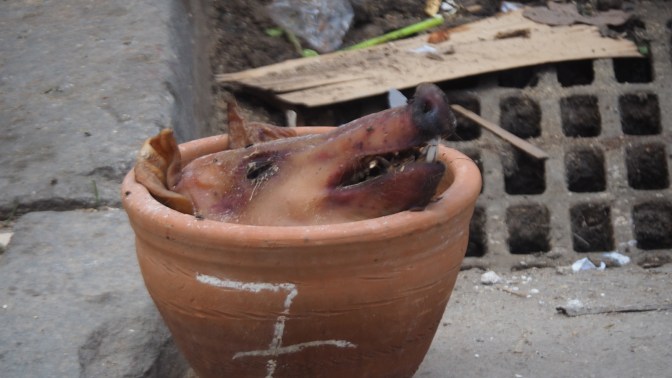
Cars that haven’t been seen in decades in North America still rumble through the streets of Havana. They are prized possessions dating back to before La Revolución. Many of them have long since had their American engines and transmission swapped for Japanese diesel power trains.

Our taxi driver told us his 1970s Lada 2101 cost US$35,000, an unbelievable sum of money, given how little people earn in this Caribbean nation.
After changing our Canuck dollars into CUCs, Cuba’s convertible peso for tourists, he squeezes our two small suitcases and two bicycle bags into the car and drives us from the airport to our Casa Particular in Old Havana where we are warmly welcomed by our hosts Rodney and Laura.
Our room is on the third floor but a gable-mounted winch makes quick work of bringing the bikes up. Laura explains that it took Rodney, who is an engineer, two years to source the parts and put it together. Such is the way in Cuba. Stuff is hard to get.

We get settled in our room and decide to leave putting the bicycles together for the next day so we can head out and explore Havana. We walk the narrow streets and before long find ourselves in Plaza Vieja and choose a place to have lunch. It’s hot and humid. We’re not used to it having come from cold and wet Vancouver, but it feels good.


After lunch, we walk for several hours to explore this city and get our bearings. It’s also a good way to shed the fatigue of travel, loosening up stiff muscles.
Buildings are generally in various states of disrepair but many are also being fixed up. Some of these buildings date back several centuries when Cuba was ruled by the Spanish after Columbus first landed on the island in 1492. Havana was subsequently founded on the banks of a natural harbour in 1519.
We dine in a small restaurant where a band is playing salsa music, creating a nice atmosphere. It feels good to be in this beehive of a city. It feels safe and we soak up the vibe. Exhausted, we return to our casa and quickly drift off to sleep in the comfortable kingsize bed.
In the morning, we build our bikes and enjoy a delicious breakfast prepared by Laura and her staff: fresh fruit, juice, eggs, ham, bread and excellent coffee. Afterwards, we again head out on foot into different parts of the city.
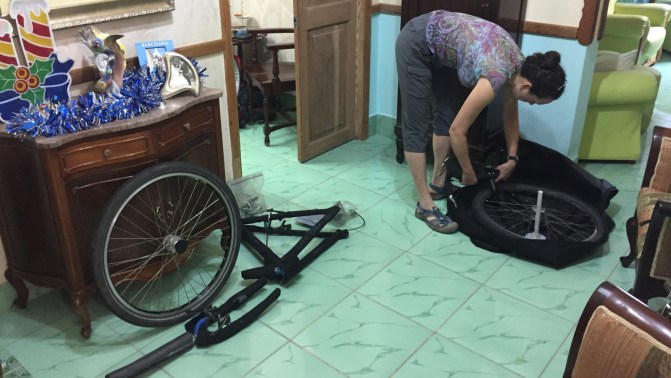
We wander along El Malecón, Havana’s famous waterfront esplanade that runs for eight kilometres from the city’s harbour all the way to Vedado. We take a break at Hotel Nacional de Cuba, a posh 1930s affair, where we have a drink and people-watch.

Outside, a long line of 1950s Chevys, Dodges and Fords await eager tourist to go for a ride along the Malecón and through old Havana. We decline the offers, preferring to explore on foot and we thread through the narrow streets of Vedado, La Rampa, Centro and Chinatown back to Prado and the beautiful Capitolio.


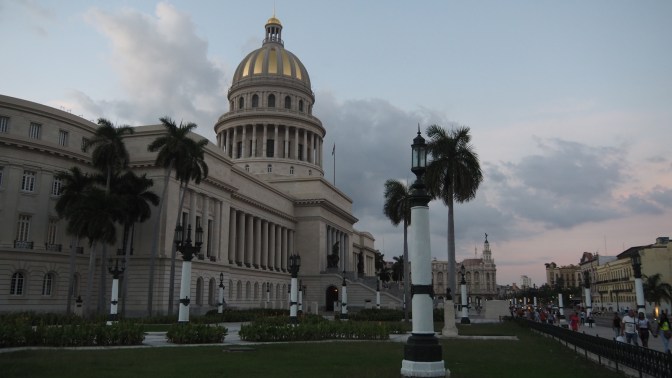
En route, we are guided impromptu by a friendly guy who shows us Callejón de Hamel, an art-covered laneway with shops, galleries and restaurants. The street is essentially an art installation of recycled materials by Cuban artist Salvador Gonzáles Escalona. We buy our guide a drink as a thank you – everybody has an angle – and continue on our own back to Old Havana.
We try to get into a couple of bars made famous by Ernest Hemingway: El Floradita and La Bodeguita del Medio, but they are both too busy, so we find a quieter place for a beverage and dinner. We have an early night as we will hit the road the next day.

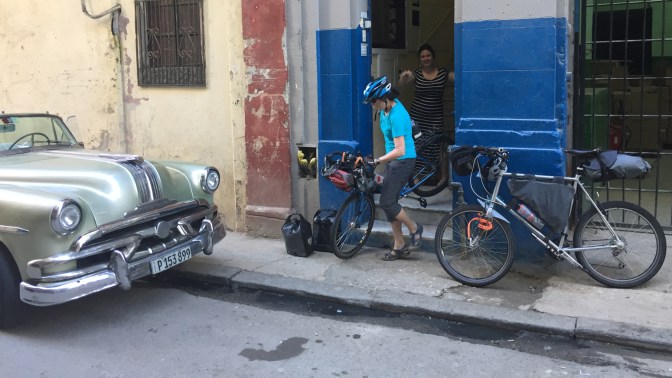
Laura and Rodney kindly agree to keep our bags until we return, and after another lovely breakfast, Jan and I carry the bicycles down three flights of stairs, say our farewells and head out to the Malecón to ride out of Havana. We try to find a bank or cadeca to change CUCs into pesos but the lineups are horrendous and after trying for an hour at different places, we give up and go into a store to buy some water and snacks. Jan asks if they will give change in pesos and they agree. And so, we head out of Havana.
We have no planned route, nor any booked accommodation. Just a general idea of some places we would like to see. We will just make it up as we go along. Our first stop is on the outskirts of Havana in Miramar where we find a restaurant on the beach to have lunch. It’s too hot for a big meal and we’re really just interested in sitting in the shade, having a cold drink and some snacks to eat.

After a nice break, we eventually leave the city behind and ride west on the Carretera Panamericana. There is almost no traffic on the road once we leave the outskirts of Havana behind, and we enjoy the ride with occasional views of the Gulf of Mexico. Key West is too far for us to see, but it’s only 100 miles north.

We cruise along approaching Mariel, an industrial town with large smoke stacks spewing something into the air, and we don’t feel like spending a night there. We stop at a roadside café for a drink and enquire if they have a room. They do and we happily take it and order another cold drink. Two young guys carry our bicycles up to the second floor balcony outside our room and we have showers with coldish water but we don’t mind as it’s still hot and humid. The shower is one we’ve seen many times before with a circuit breaker right in the shower to turn on the heating element in the shower head. I’ve had a few shocks from those in the past and I’m careful not to stand on a metal drain and inadvertently touch the shower head. Water and electricity are not a great mix.

We order dinner and we have a choice of chicken, pork, fish or lobster. Meanwhile, the family is making preparations for a new year’s eve party the following day and large hunks of meat are brought out from a freezer. It’s a warm evening as we happily lounge in the café.
We rise with the sun and a local rooster. After breakfast we pay our bill and head out on the road. The only traffic are the occasional bus or truck loaded with people heading to work or to town for shopping.

We don’t stop in Mariel, a rough-looking industrial town, and ride straight through but I make a wrong turn on the outskirts, realizing my mistake only after a couple of kilometres. But rather than retracing our route, we take the Autopista for three kilometres until we can take a secondary road in the direction of Las Terrazas, our destination for today.
The Autopista is six-lane national highway between Havana and Pinar del Rio. Ironically, it has less traffic than the secondary road we were on before. Lack of car traffic is what makes Cuba a cyclist’s dream. The secondary and tertiary roads are generally in pretty bad condition and what little traffic is one them can not go very fast. I also think drivers are so used to sharing the roads and streets with slow-moving vehicles like bicycles, scooters, horse carts and what-have-you, they give us a wide berth and usually a friendly honk as they approach from behind.
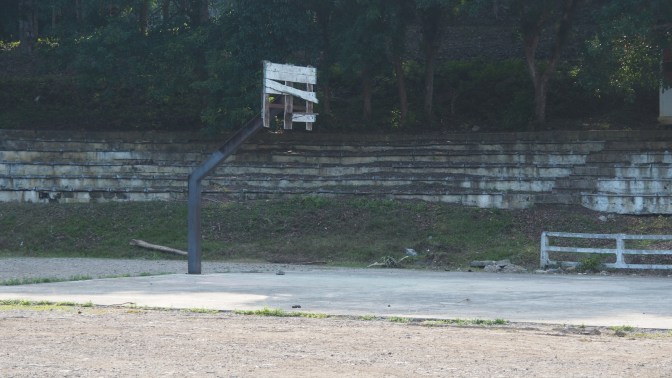
We ride into Reserva de la Biosfera Sierra del Rosario where a friendly policeman asks us where we’re headed and if we have any accommodation. We tell him we want to go to Las Terrazas, and no, we don’t yet have lodgings. He gets on the phone and a few moments later tells us his friend will meet us and show us his casa when we get to town. We thank him and ride on.
We take a steep side road to Cafetal Buenavista, a 19th century coffee plantation established by French refugees from Haiti. It’s still early and besides the staff, we’re the only people there. We have a cold beer – the only drinks for sale – on a shaded terrace overlooking the valley below.
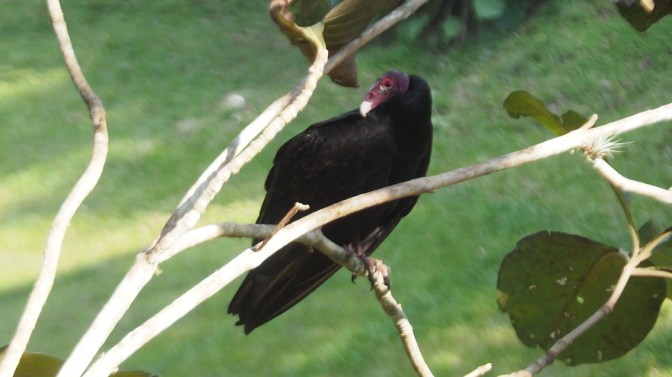
When we get to Las Terrazas, as promised, a man on an electric moped comes out to meet us and introduces himself as Noel. He guides us to his house just on the outskirts of town and shows us the room he has available. It’s sparkling clean with an ensuite bathroom and we happily take it as this small town has few options apart from Hotel Moka, a large hotel and fairly expensive, by Cuban standards. Besides, we prefer to spend our money with locals rather than hotels owned by the Cuban government and multinational corporations.

The Casa Particular system has been around in Cuba since the late 1990s and has expanded dramatically since the Cuban government loosened the rules. It’s an important source of income for people. The nightly cost for a room is between 20 and 25 convertible pesos, or CUC$, equivalent in value to the US dollar. Breakfast is sometimes included and often dinner can be arranged as well for an additional fee, usually CUC$6-10.


It’s new year’s eve and when we wander into town, parties are starting already. Music blasts from almost every house as families have gathered to ring in the new year. We try to find a restaurant that’s open but some are closed and others have private parties. We end up at a small place we had seen earlier that day and are able to get a meal for CUC$3. I double check on the price because it seems too low, but the waitress assures us that’s the price for both of us. It’s nothing fancy, roast pork with rice and beans and salad, but we’re happy to have found a meal as options are limited.
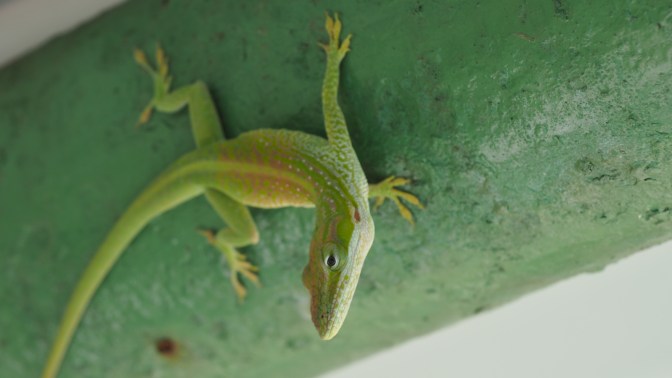
Afterwards, we walk to another place for a drink but are told it’s closed for a private celebration, although, the friendly host tells us we’re welcome to sit and have a beer. It’s a nice place with a terrace overlooking the lake. People are drifting in and the staff begins serving their meals. After a while, perhaps taking pity on us, they ask if we want to eat. We tell them thanks, but we’ve already eaten. Too bad, because the food looks great.
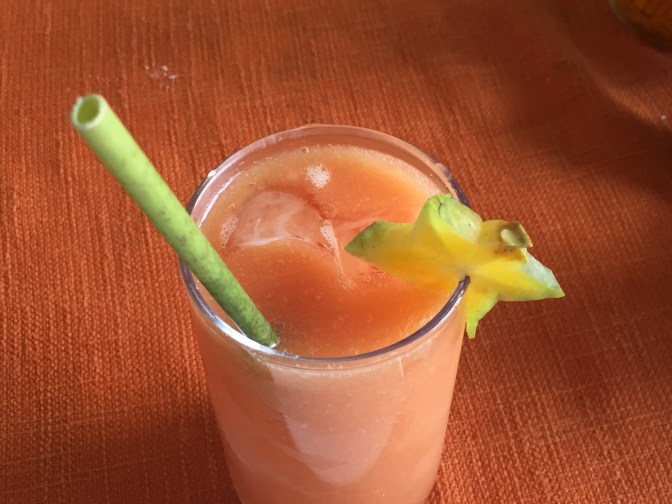
We walk up to Hotel Moka where the guests are crammed into a full dining room finishing their new year’s feast. We take a seat in the bar and have another drink while a small band plays salsa music. It’s a nice way to close out 2019.
Noel serves us a beautiful breakfast in the morning and after settling our bill we ride through the still sleeping town to see if the tienda (market) is open but it isn’t, so we head out. There is absolutely no other traffic on the road until we get to the Carretera Central de Montaña where a bus is unloading about 30 people with bicycles. We wave as we pass them, thinking they will catch up with us, but they never do.
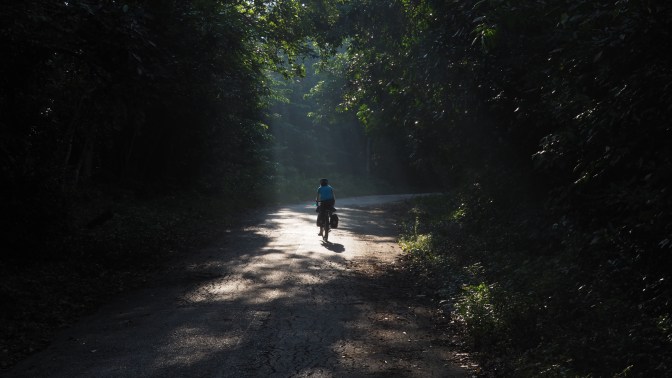
We slowly climb all morning and eventually ride along an undulating spine in the Sierra del Rosario with distant views of the water on both sides. As we round a curve, some people are tending to coffee beans spread out drying on the tarmac. We stop and ask them if it’s okay to take some photos. They agree and continue with their work.

We love the quiet road passing through small, rural towns where people mostly seem to work in agriculture. We buy some water at a road-side tienda before a steep descent takes us into Niceto Pérez. As I stop to wait for Jan, my rear tire suddenly explodes. I haven’t had a puncture in that tire in years and I’m surprised at this blow-out.
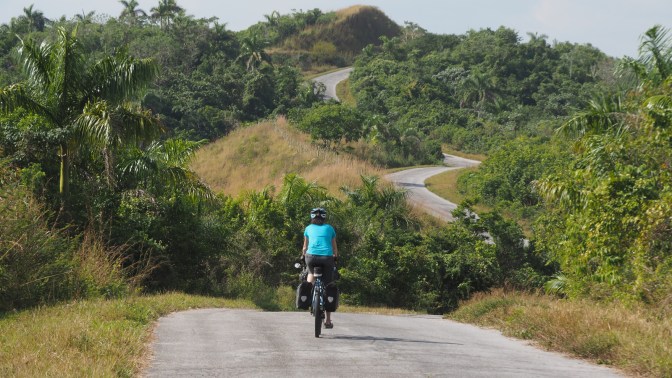
Once I have the tube out I find an inch-long gash on the inside of the tube and no obvious reason for it. I put in another tube while Jan patches the blown tube. The only thing I can think of is that the heat of the braking on the rims during the long descent blew apart a weak spot in the tube. We buy a cold lemonade at another tienda and carry on to San Diego de los Bańos.


Standing in the town square, looking on my phone for a place to stay, a man rides up on his bicycle and greets us in English. His name is Pilo and he explains he’s a teacher and asks us where we’re from. When we tell him, he begins to rattle off places in Vancouver and BC, making us think he’s been there, but he explains he has not. He has learned through study and teaching.

He points us to nearby Villa Julio y Cary, the place we had been looking for, and introduces us to the hosts, a lovely older couple. We take a room and make arrangements for dinner. Pilo agrees to meet us later to show off his library. The fridge in our room has cold beers and we happily sit down after a long hot day in the saddle. We rode 83 kilometres and climbed 1,550 metres. No wonder we’re tired.
Refreshed after a coldish shower we meet Pilo and wander a few blocks through town to a small lock-up behind the police station where Pilo’s library is kept. He proudly shows us the collection of Russian and English books, including a book signed by Margaret Atwood and her partner Graeme Gibson.

The building is in bad repair and the termites are slowly eating it, and probably the books, too. We happily give him a donation for the library and thank him for the tour. He has to cycle home 12 kilometres in the dark but he reassures us that he does it all the time. We return to our lodgings and have a delicious dinner before turning in.
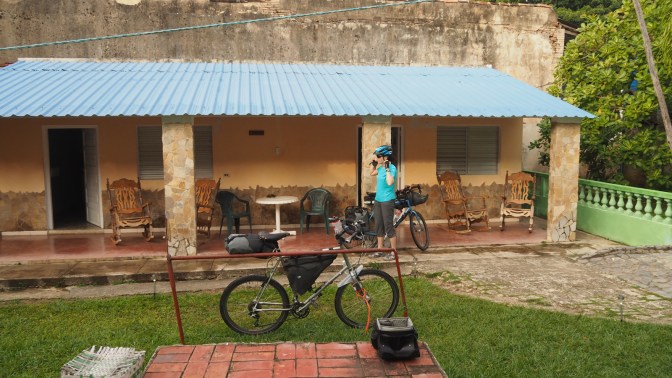
We continue to choose small roads through the mountains on our way to Viñales. It’s lovely cycling through Parque Nacional La Guira. Once owned by a Cuban farmer and politician, the land was confiscated following the revolution and owner José Manuel Cortina was forced to go into exile in the U.S.
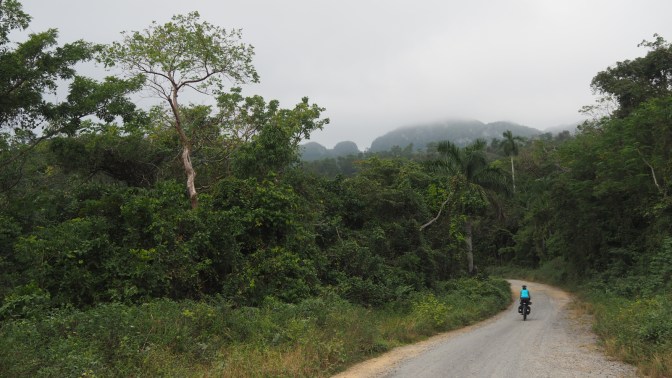
We make a short side trip to Cuevas de los Portales, a complex of large caves where revolutionary Che Guevara went into hiding during the Cuban missile crisis, thinking he could lead a resistance from there against potential American invaders but the invasion never came.

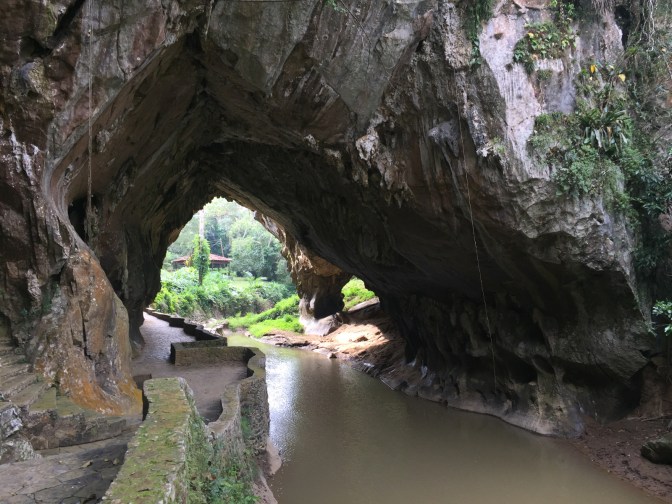
We continue on a small road through the mountains parallel to the highway between La Palma and Viñales. The absence of traffic continues to make this a cyclist’s dream come true. The road is in rough shape but the potholes are easily navigated on the bicycle.

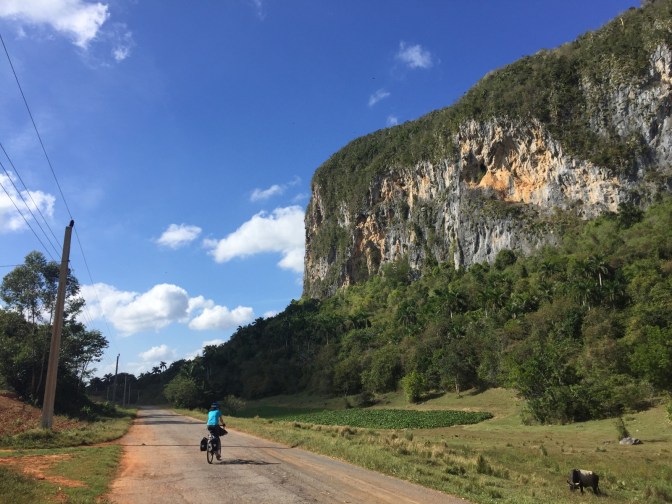
By mid-afternoon we arrive in Viñales, a popular tourist town that is way too busy for our liking. We go to a Casa recommended by other cyclists we had met on the road earlier that day, but unfortunately, she is fully booked. She offers us a glass of mango juice and makes a couple of phone calls. A few minutes later, her neighbour arrives and shows us her Casa, and we happily accept her invitation. Sady is a great host. The apartment is sparkling clean and we are happy to have found a place away from the loud traffic and goings-on in downtown Viñales.


In the evening, we wander through a neighbourhood on a circular route into downtown to look for a place to have dinner. We settle on a very chill and off the main drag Mogote Café where an all-female band plays a blend of salsa and pop songs. They have matching outfits made of what looks like an old aunt’s curtains. It’s a great atmosphere and we hang out, eat dinner and have a few drinks.

A dog hangs out by our table begging for scraps. We don’t give her anything but Jan pets her for a few minutes and, after the dog trots off, discovers her fingers are completely black from the dusty dog’s hair. We encounter many dogs daily but none of them have been aggressive, unlike in many other places in the world where we’ve cycled.
We decide not to stay in Viñales. It’s way too busy. One idea was to ride to Maria la Gorda on the southwest coast but we would have to find some alternate transportation – a bus or taxi – back to Havana, as the distance is too great for us to cover in the time we have. It’s not an attractive option, so, we look for alternate places to have some beach time and settle on riding north to Playa Jutias.

The landscape around Viñales is gorgeous. A wide, fertile valley is bounded on both sides by limestone mogotes, rounded hills with steep sides. The fields are being worked with ox teams as most farm machinery has all but disappeared following the cessation of Soviet aid after the collapse of the Soviet Union in 1991. Agriculture in Cuba reverted back to basics, resulting in largely organic production.
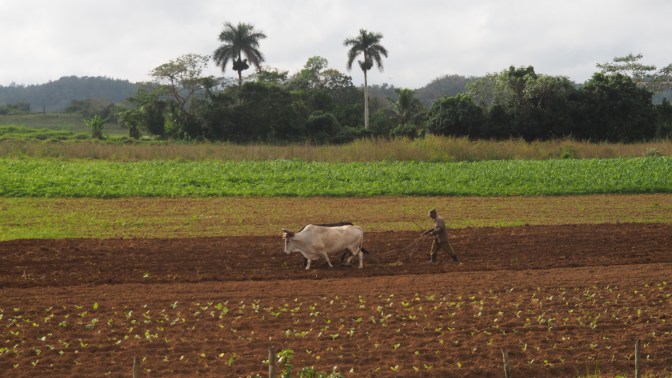

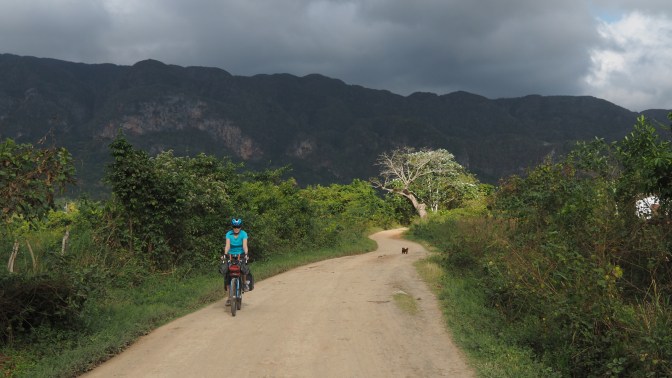
We arrive in Santa Lucia around lunch time and ride around the town looking for a place to eat as well as any potential accommodation for the night. The only place to eat is a small road-side restaurant on the main drag. After lunch, we ride out to Playa Cayo Jutias and lounge on the beach for the rest of the afternoon.


People leave just before sunset as the staff close down the beach-side bars. We have a quiet ride back to Santa Lucia, stopping at a Casa along the way but there doesn’t seem to be anybody around but we find one in Santa Lucia. The hosts don’t offer dinner so we are back at the road-side café across the street.

In the morning, we get on the road hoping to explore another beach town, Puerto Esparanza. It’s a few kilometres off the road to La Palma but we have plenty of time, and you just never know what you may find on such detours.

Puerta Esparanza turns out to be a small fishing village but there’s no beach and we decide to continue on to La Palma with a short day to Palma Rubia the next day. The previous day’s food did not agree with me and I’m not feeling at my happiest, as a result.
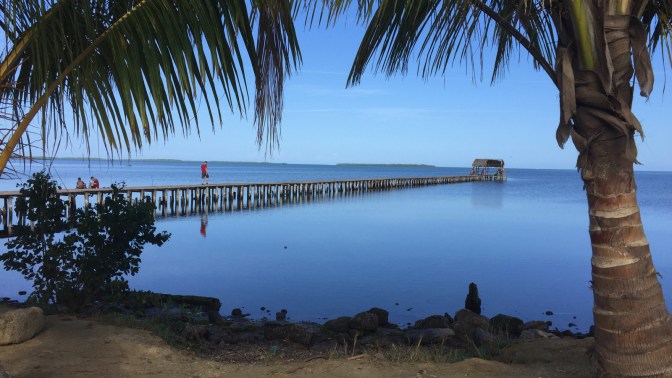

La Palma is a larger town and we arrive early afternoon. When we stop in the centre of town, we are immediately set upon by a guy who wants us to eat at a particular restaurant but we don’t feel like it. Instead, we go to a small snack bar to have a sandwich and a cold drink.
We meet a couple of other guys who want to chat and before long one of them, Julius, leads us to his house to show us the room he rents out. It’s good enough for us and we make a deal for the room, including dinner and breakfast.
Julius asks if we want water and beer. “Yes, please,” we reply. A couple of minutes later, Julius and a friend come walking out of the house with a fridge and they carry it up the stairs to our room, despite our protests.

“You need this to keep the beer cold,” says Julius. “It’s no problem.” He leaves, only to return a while later with a couple of bottles of water and some Budweiser, the real Czech stuff, not the American one that claims to be beer.
“Nothing says American like stealing from other countries and making bland, watery beer,” according to beeriety.com.
Just as we settle into our digs, a storm that’s been brewing for a couple of hours finally breaks with a deluge. People scatter and the rain pounds down for about an hour. Afterwards, the air is fresh and the temperature has dropped a bit. Squalls like this are like a reset. We go for a walk to explore the neighbourhood.
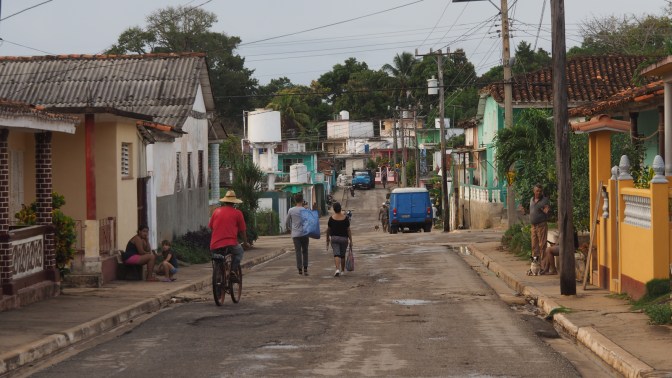
Julius tells us about the dance party set for later that night. It happens every Saturday at the community centre, and he points to an open square a couple of blocks away. We notice the wall of speakers with some trepidation.
We have a nice dinner in our room, served by Julius and his aunt, and contemplate whether or not to go to the dance party. When the music starts, we decide not to go. It’s so loud that being any closer than two blocks would be too damaging to our hearing.
We eventually go to bed while the music blasts away. It’s so loud, it’s like the speakers are in our room and the volume is set to 11. We stuff ear plugs into our ears but it only dims the volume slightly. Remarkably, we do eventually fall asleep but keep waking up. Eventually, around 2:30 a.m., the music stops and we drift off into deeper sleep.
Our ride to Palma Rubia is only 20 kilometres and we arrive at La Curva, a Casa recommended by some other cyclists we met a couple of days earlier. They have a room and we happily book two nights with dinner and breakfast. Our plan is to catch the boat to Cayo Levisa the next day and have a beach day on the island. We spend the rest of the day reading and relaxing, with a short bike ride down to the boat dock to find out some details about our planned trip.
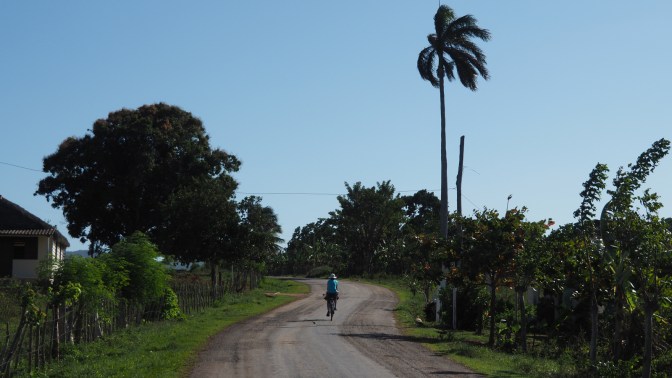
At the end of the day, some other guests at our Casa arrive back from the island, including a couple from the Sunshine Coast near Vancouver. Martin and Marina are also cycling in Cuba. We have dinner together, along with a Cuban couple.
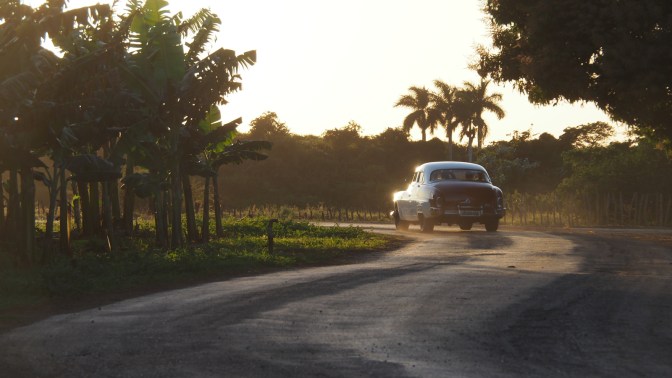
After dinner, the music is turned up and before long we are all doing our best mambo but we are put to shame by our hostess and the Cuban couple. We desperately, and unsuccessfully, try to keep up with the different moves but it’s great fun.
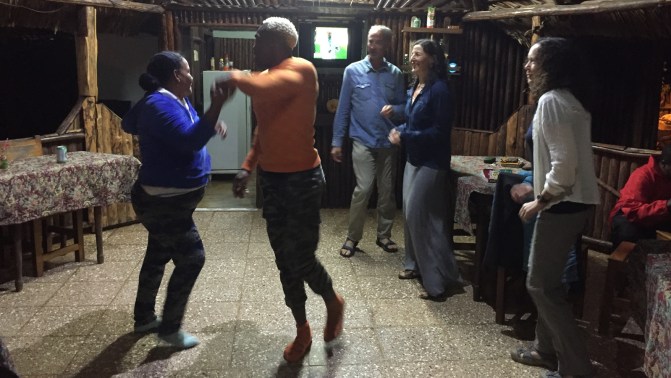
In the morning, we walk down to the boat dock and embark for the 30-minute crossing to Cayo Levisa. The hotel sprawls across a good part of the island but it’s tastefully done and a great setting.

We have a lazy day reading on the beach, a nice buffet lunch that was included with the cost of the boat ride, and a walk to the other end of the island. The wind from the northwest makes it just a bit too cool for a swim. Temperatures seem to have returned to a more normal level as opposed to the searing, humid heat we experienced during our first week. At dusk, we embark for the return boat trip and wander back to our Casa in time for dinner. It was a lovely, lazy day. This is a holiday, after all.
We bid farewell to our lovely hostess in the morning and continue our journey east back to Havana along the northern road. It’s constant up and down through small towns with occasional glimpses of the ocean. Our destination for the day is Cabañas and a Casa owned by the same people of the one in Palma Rubia where we’ve just spent two nights.

We arrive at Villa Montecino early in the afternoon and check into our room. For the third day in a row, an afternoon storm dumps rain but we are sitting under cover, sipping cold beers and happy not to be caught out in the weather.
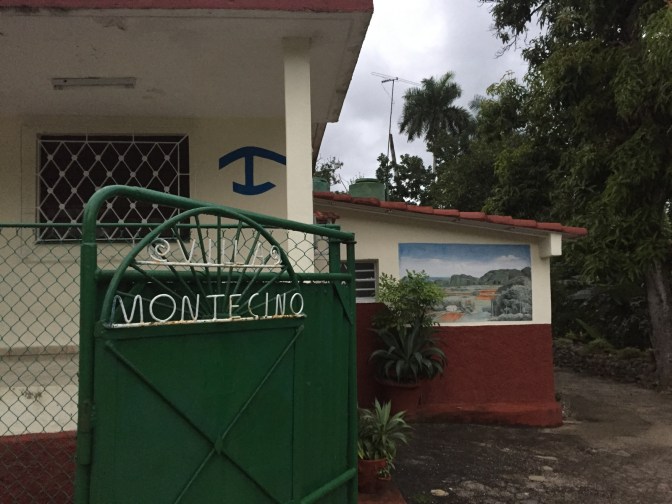
After dinner that night, we sit around with Luis, our host and owner of the Casa. We try to converse but our halting Spanish makes in-depth conversation difficult. We fumble through, understanding some words, and we are able to answer in rudimentary sentences.
He asked about our stay at his Palma Rubia Casa, and if it was clean, how the food was and if we enjoyed it. It’s clear he does not go there very often and depends on the couple running the place to do a good job. We assure him everything was great and that it’s one of the best Casas we have stayed. He’s pleased but laments the fact that since he built his Palma Rubia casa, many others have been built, making it difficult to make his investment pay off, although, looking around, I think Luis and his family are doing quite well.
It’s hard to know how it all works in Cuba. It’s a unique place and one of the last communist nations still in existence, although, it has morphed away from its Marxist-Leninist ideals created under Fidel Castro following the 1959 revolution. The government still has its hand in almost everything but people have more freedom to buy and sell goods, build houses and participate in the tourism industry.
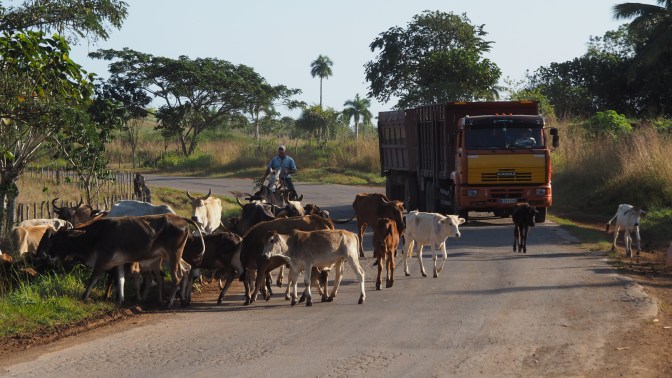
As tourists, one of the best ways to help the Cuban people is to travel independently instead of flying into one of the many all-inclusive resorts for a week. Luis and his family are a perfect example of people adding to their income by direct participation in tourism.

The next morning, we embark on our final day of riding to get back to Havana where we plan to spend two more days to further explore the city. En route, we stop at the place where we spent our first night, near Mariel. Jan inadvertently left a shirt there and they still had it, happy to see us again and return the lost property.
A few hours later, we arrive in central Havana and check into our accommodation. We would have gone back to our first Airbnb but, unfortunately, they were booked. Casa Miriam y Yali is in a colonial house just a couple of blocks off the Malecón in Centro Havana. It’s a bit of a rough-looking neighbourhood compared to the more polished Vieja Havana but it’s authentic.

On the corner is a bakery and there are several small paladars as well as a high-end restaurant and a guy selling produce from a hand cart. This is the contrast that is Cuba and we enjoy exploring this part of the city.
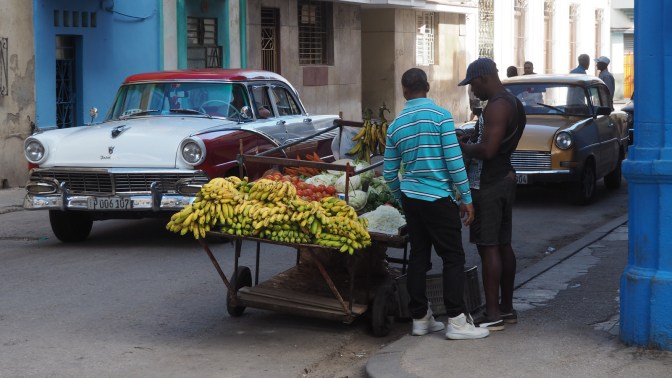
We walk back to where we stayed at the start of our trip to collect our luggage, and with Rodney’s help we flag down a bicycle taxi – a tricycle with a double back seat – to take us back to Centro, as the bike bags are too difficult to carry that distance on foot. For CUC$3, the guy pedals us through the busy traffic of Havana’s Barrio China back to our digs in Centro where we disassemble and pack up one of the bikes, leaving the other for the next day.

Another guest at our case is Eduardo, from Mexicali, Mexico, and the three of us head out the next morning to go to the Havana Club Rum Museum for a tour and tasting. The museum tour is well done and explains the history and process of rum manufacturing in Cuba.

Afterwards, Eduardo heads off to meet some other new friends he met the day before, and we continue our walk through Havana, ending the day at San Cristóbal, a jewel of a restaurant tucked into an old colonial house just around the corner from our Casa. We have a fantastic meal with complimentary dessert and rum to finish off a great trip.
Travelling independently in Cuba is easy and safe. We booked our Havana accommodation ahead of time through AirBnB but made no other plans beyond that.
Given our two-week time frame, we decided to spend our time in the western part of the island and only use our bicycles to get around. Food and accommodation are readily available in even the smallest towns. If you can’t find a place, just ask and somebody will know somebody who has a room to rent.
It’s not going to be 5-star, or even 3-star, but all the places we stayed in were clean, some had hot water – others claimed to have hot water but it was more lukewarm or cold – and the food was tasty and often more than we could eat (and I can eat a lot). Although a little monotonous – chicken or pork or fish with rice and beans, platano and salad – everything was fresh. Security for our bicycles was always taken seriously by the hosts, offering to lock our bikes in the house or allowing us to take them into our room.
The cost of a Casa Particular is CUC$20-25 per night for the room, including towels and bedding and always with ensuite bathroom. Breakfast is sometimes included, but when it wasn’t it cost CUC$3-5 per person and dinner was CUC$6-10 per person. Most rooms had a small fridge with water, pop and beer costing CUC$1-2 each.
We flew to Havana with Aeromexico through Mexico City, preferring not to fly through Toronto, Montreal or the United States. We added a 3-day stopover in Mexico City on our return flight to explore a little of what that great city has to offer. More on that in the next post. Until then, some more photos from Havana.

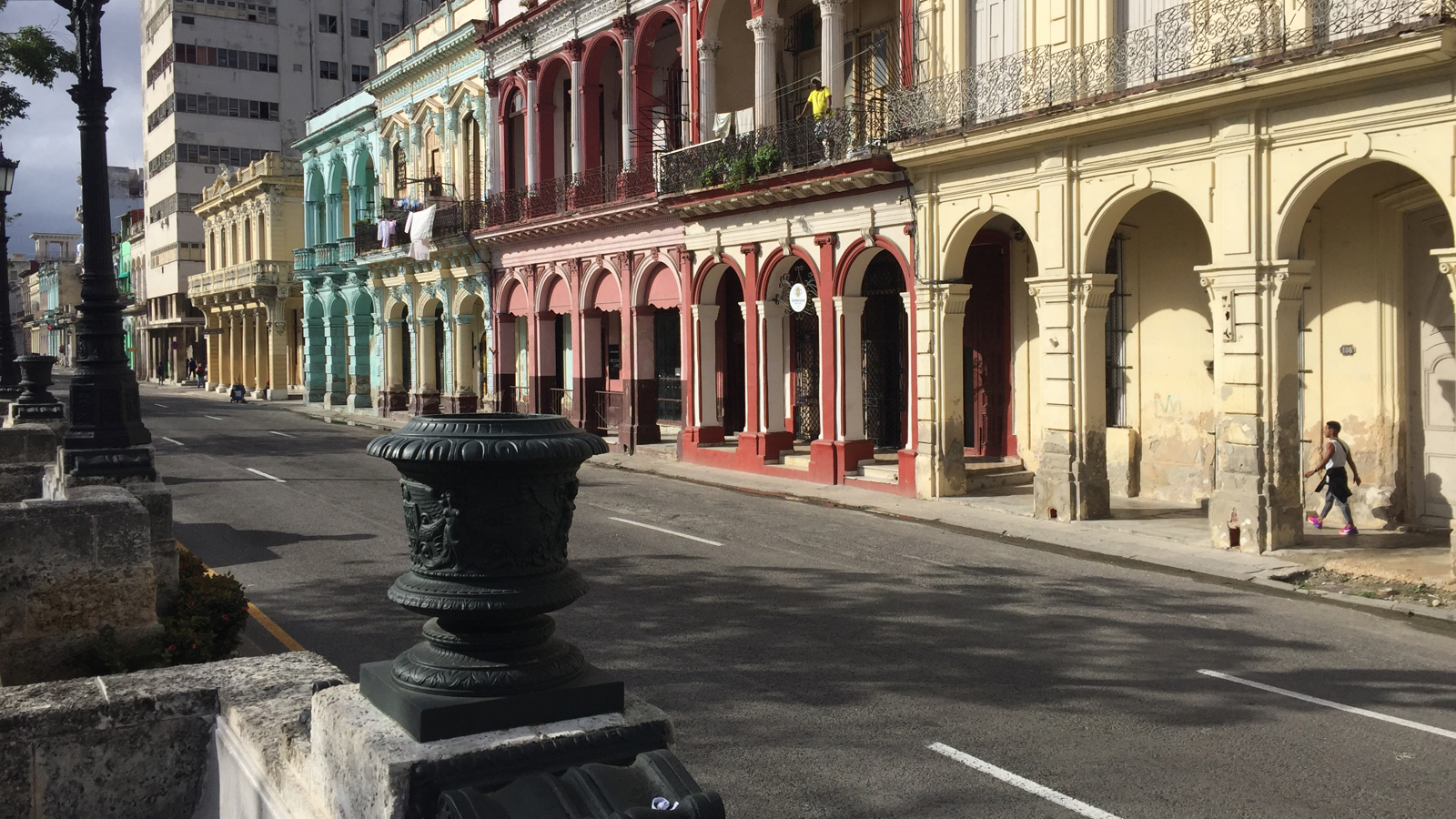



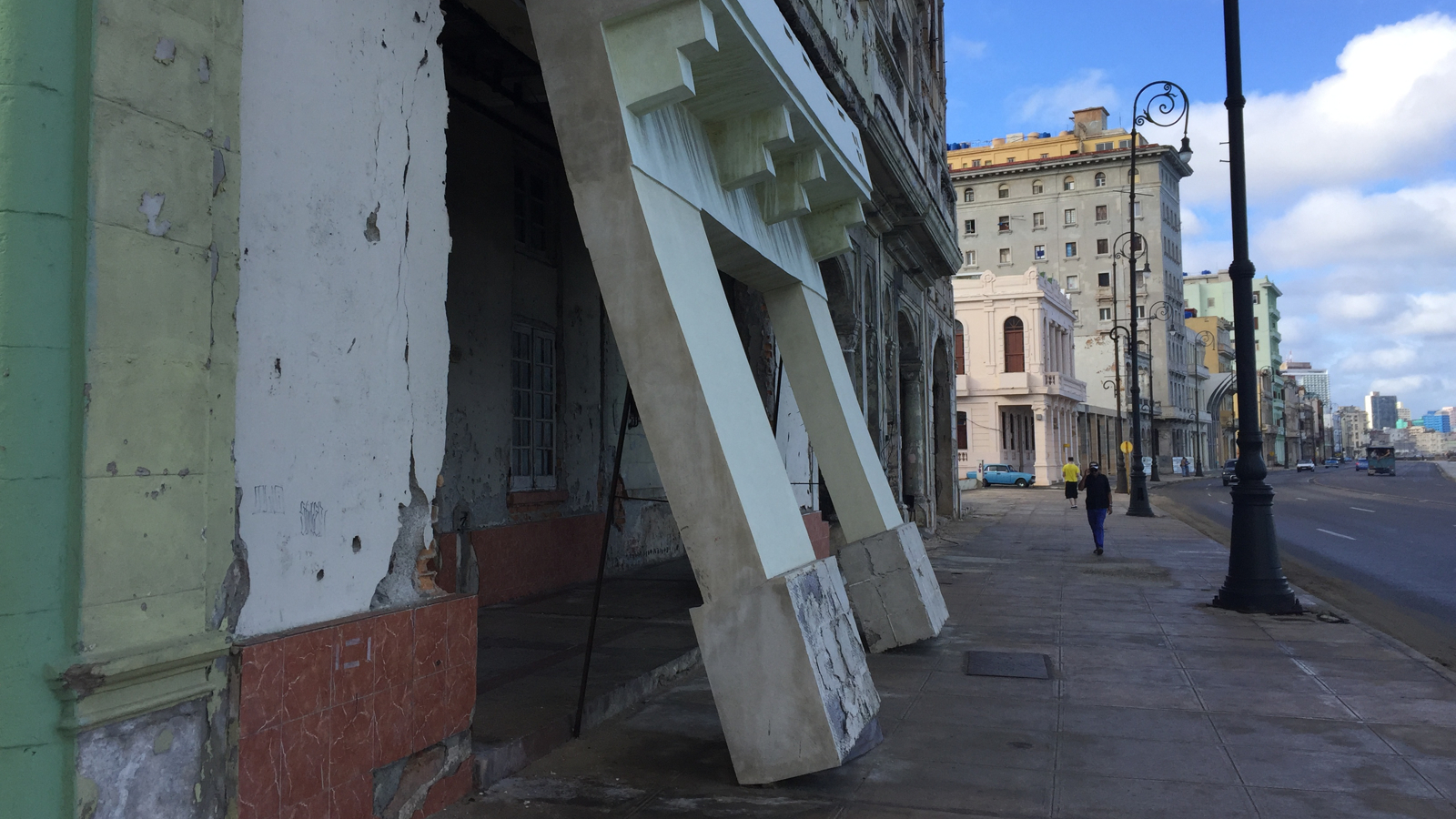




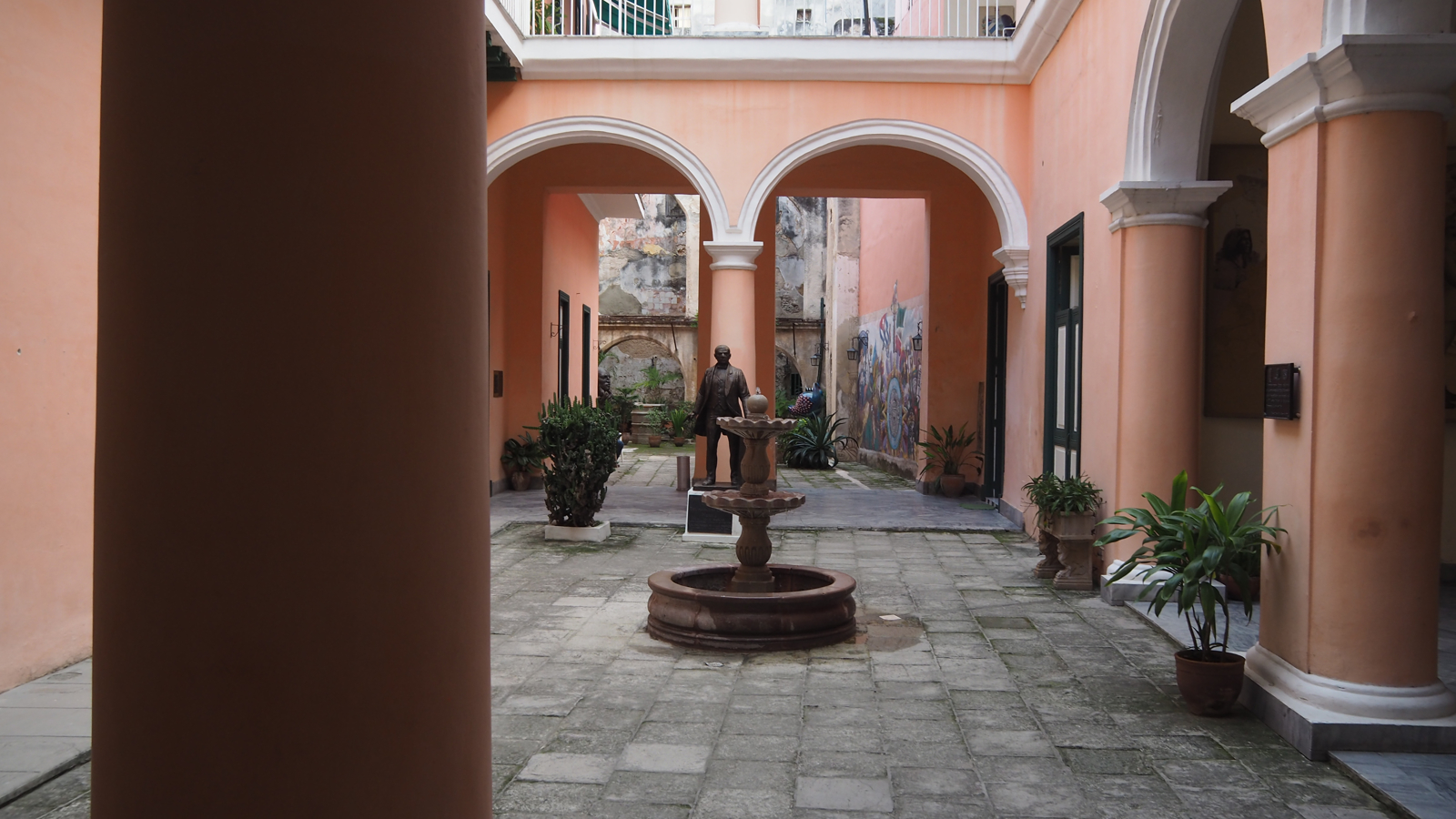

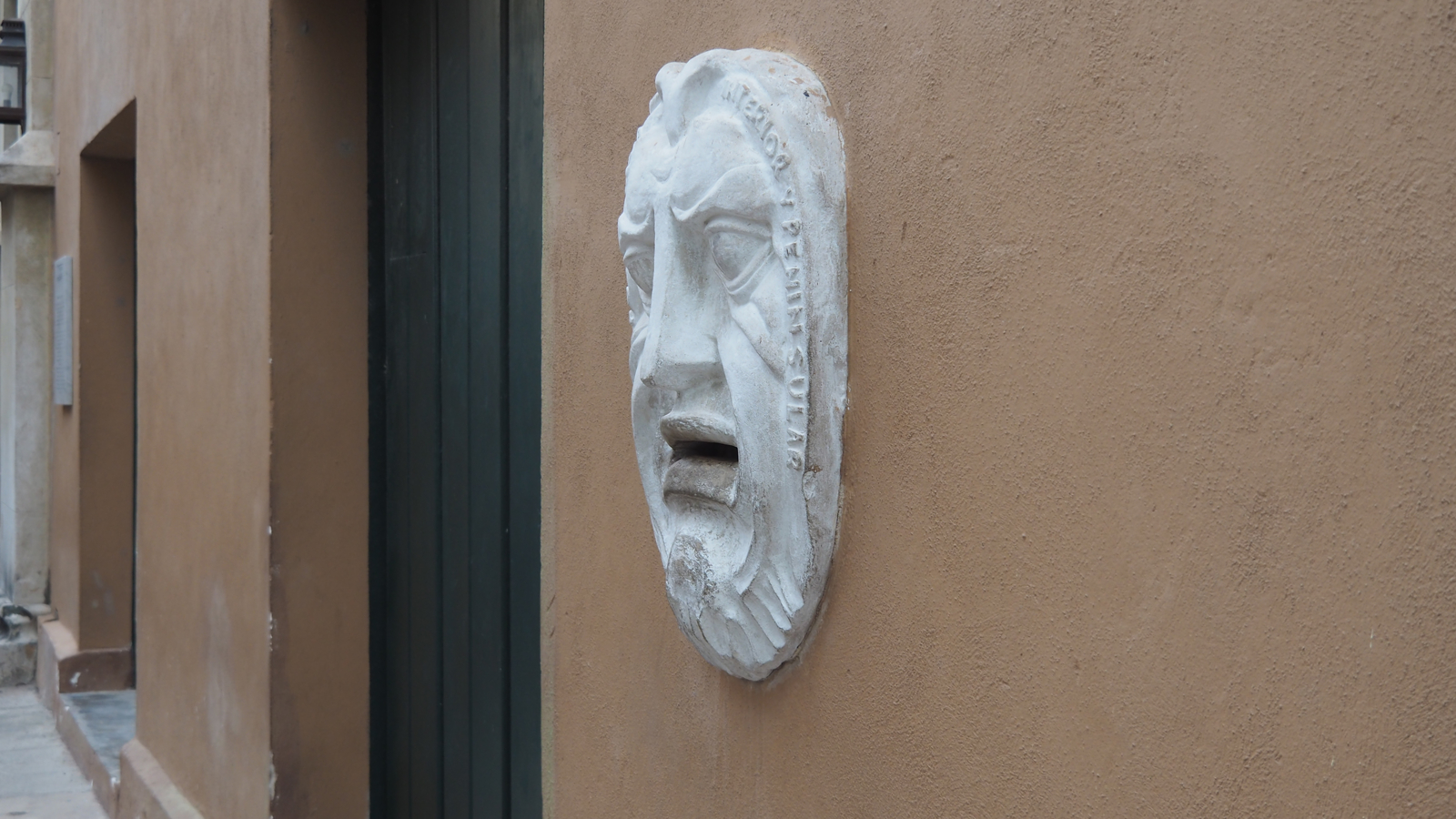

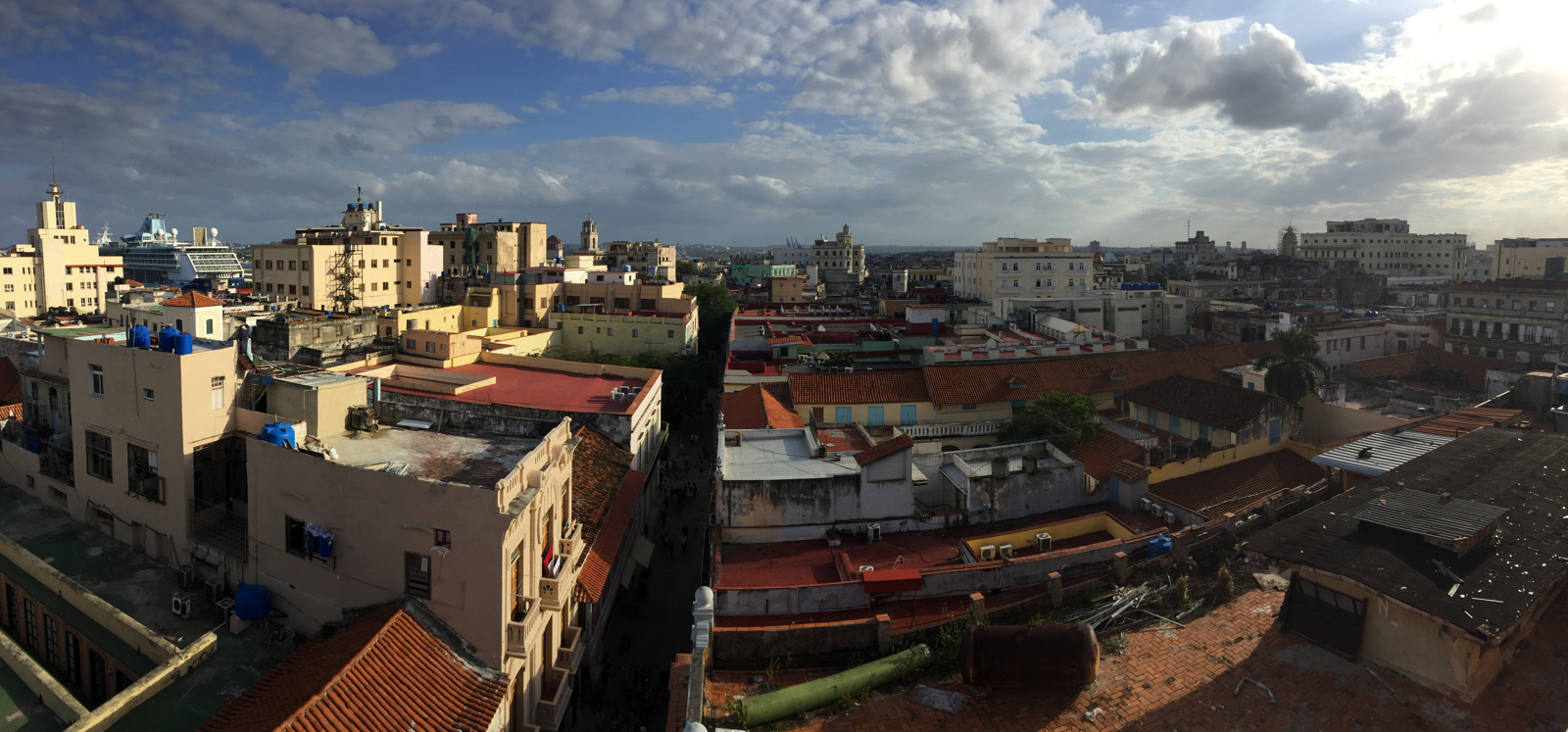




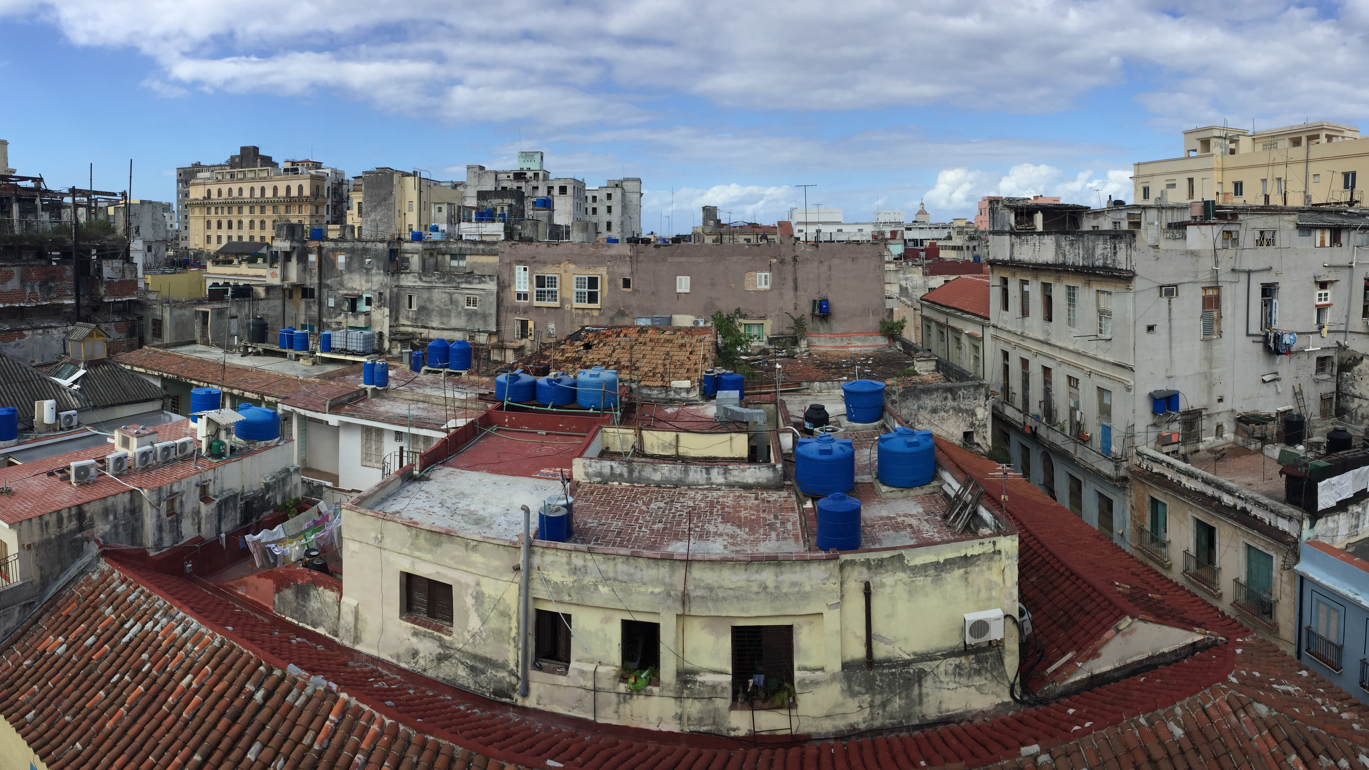
Nice cat photo!
T
Just for you.
Great post (as always!!!)
Are you there now???
Hey Paul and Jan,
As always, your blog is a delight. If you get too old to pedal you can lead a tour, including Chun Wan and me to some of your favourite places.
You presented a photo of an organic straw. What was it made of? We have two sets of friends who own cafes that sell bubble tea. It’s hard to find an organic straw that will suck up a tapioca pearl. Both cafes are eager to source organic straws. Maybe the Cubans have a breakthrough idea that could be exported under Trump’s nose somehow…
Thanks, Jim.
The straw seemed to be some kind of reed, an actual plant but I couldn’t tell you which. It was at a restaurant where they grow all their own ingredients locally and organically, in Las Terrazas. Eco Restaurante El Romero is the name of the restaurant. https://www.lasterrazas.cu/
Hola. Your photos are amazing. I follow your Journies from afar. My travels are more by bus. Questions: I have a flight booked to Cuba on April 1st. To your knowledge is there a problem in flying to Cuba and flying out of Cuba? Other than the self imposed quarantine when you return Home. Please let me know.
Thankyou and Regards,Vince Nicola,friend of Ivona.
Sent from Mail for Windows 10
As always, enjoyed your photos and commentary.
I was fortunate enough to be able to travel to Cuba in early winter 2011 mostly to play softball against Cuban teams in Havana. Sadly, we only traveled outside Havana one afternoon and didn’t get to enjoy as much of the countryside as I would have liked. The Cubans I met and continue to see from time to time are wonderful people, and I love their music.
To you and Jan, stay safe and healthy. Crazy times.
Thanks, Norman. You stay healthy, too. Crazy times, indeed.